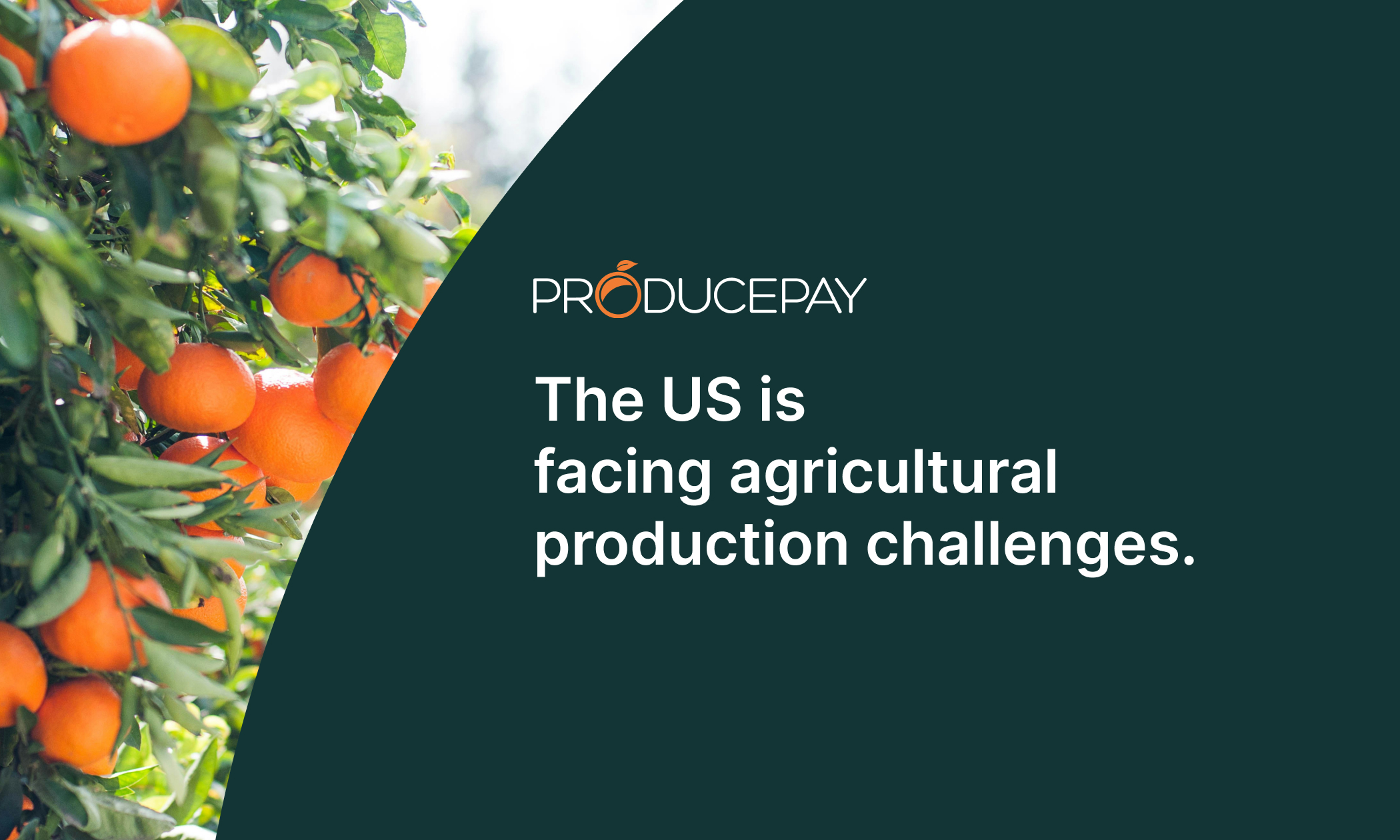
The US is facing agricultural production challenges.
According to Statista, agricultural production areas in the United States have declined steadily since 2000, except for a slight increase in 2012. Over the 21st century, the total area dedicated to agriculture has decreased by more than 66 million acres, reaching 878.6 million acres by 2023.
This reduction in agricultural land reflects a trend toward consolidation and greater productivity in agriculture and the potential conversion of farmland for urban development or conservation purposes. This phenomenon has also been accompanied by a decrease in the country’s total number of agricultural operations, indicating significant changes in the structure and practice of agriculture in the United States.
The agricultural sector in the US faces numerous and diverse challenges, and we’ll delve into what we consider the most significant challenges and their short—and long-term impacts.
Labor shortages
Labor shortages are a complex issue influenced by various interconnected factors.
American agriculture heavily relies on immigrant workers, and current immigration policies could exacerbate labor shortages. These policies aim to restrict migration, directly impeding access to foreign workers.
Moreover, the agricultural labor supply from Mexico has declined in recent decades. Labor has also been scarce there because the rural population is increasingly taking non-agricultural jobs.
Many farmers are considering mechanized and automated solutions in response to these labor shortages. However, the transition has been slow, primarily due to the required investment and the need for tech-specialized workers, whose training takes time.
Pressure on natural resources
According to the Environmental Protection Agency (EPA), the US agricultural sector consumes approximately 80% of the country’s available freshwater. This high demand is primarily due to crop irrigation in states like California and Texas, where fruits and vegetables requiring large amounts of water are produced.
Furthermore, climate change exacerbates this situation, leading to more frequent and prolonged droughts in many critical agricultural areas. These droughts reduce surface and groundwater availability, further limiting agricultural resources and increasing competition for water among different sectors.
Soil degradation is also a growing concern. Intensive agricultural practices such as monoculture and excessive use of fertilizers and pesticides have deteriorated soil quality, leading to soil erosion, reduced organic matter, and salinization. The loss of fertile soil diminishes agricultural land’s productivity and affects agriculture’s long-term sustainability.
It’s worth mentioning that these issues are interconnected; overexploitation of water can lead to soil salinization, and degraded soil can reduce the land’s ability to retain water, exacerbating scarcity issues.
Rising operating costs
The increase in operating costs is primarily influenced by the constant rise in production, labor, administrative, and marketing costs. These cost increases affect the profitability of agricultural companies and underscore the need to optimize business and production processes to enhance efficiency.
Costs have risen due to various factors such as input prices (fertilizers, seeds, agrochemicals), machinery and technology costs, and water and energy use expenses. Additionally, due to labor shortages, considerable increases in minimum wages have occurred in several states.
Government subsidies are essential for the agricultural sector, offering financial support to help farmers manage rising production and operating costs, mitigate risks, promote sustainability, and adapt to trade policies. Through programs including direct payments, crop insurance, and support for research and sustainable practices, these subsidies aim to stabilize farmers’ incomes and ensure the production of essential crops. However, subsidy levels have fluctuated over the years, leading to uncertainty among farmers.
We are your partner in tackling these challenges
Given the challenges mentioned above, it’s crucial to highlight the vital role that adequate financing plays in strengthening and evolving the sector. That’s why we offer financial solutions that address the agricultural sector’s needs.
Our Pre-Season financing provides farmers with the working capital they need to prepare for each season. This enables them to cover daily expenses and invest in operational growth, directly addressing the growing needs amidst agribusiness consolidation and rising operating costs.
Our platform provides marketers and retailers with a direct and secure produce supply from verified farmers, ensuring in full and on-time deliveries. This integrated approach not only empowers growers to overcome significant obstacles but also ensures that distributors maintain the flow of local produce to their customers.

